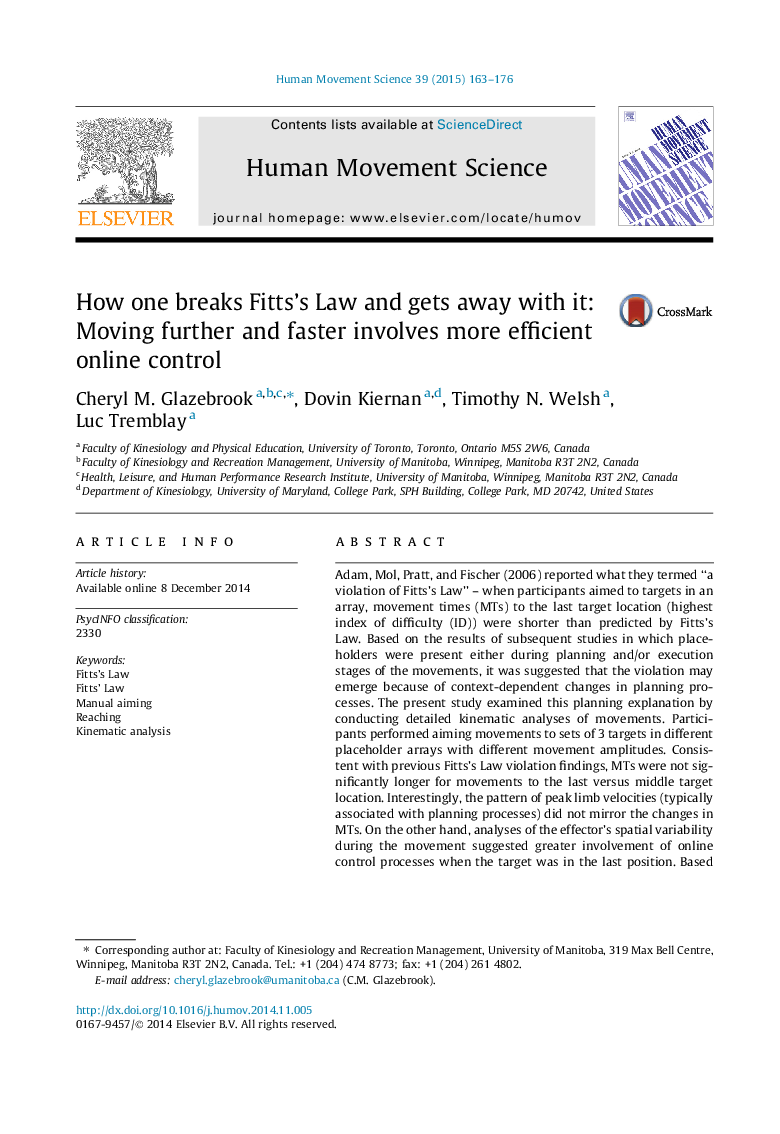| Article ID | Journal | Published Year | Pages | File Type |
|---|---|---|---|---|
| 928297 | Human Movement Science | 2015 | 14 Pages |
•Movements to the farthest target in an array led to a violation of Fitts’s Law.•Violation of Fitts’s Law resulted from more efficient online control processes.•More efficient online control resulted from preparation of a limb re-acceleration.
Adam, Mol, Pratt, and Fischer (2006) reported what they termed “a violation of Fitts’s Law” – when participants aimed to targets in an array, movement times (MTs) to the last target location (highest index of difficulty (ID)) were shorter than predicted by Fitts’s Law. Based on the results of subsequent studies in which placeholders were present either during planning and/or execution stages of the movements, it was suggested that the violation may emerge because of context-dependent changes in planning processes. The present study examined this planning explanation by conducting detailed kinematic analyses of movements. Participants performed aiming movements to sets of 3 targets in different placeholder arrays with different movement amplitudes. Consistent with previous Fitts’s Law violation findings, MTs were not significantly longer for movements to the last versus middle target location. Interestingly, the pattern of peak limb velocities (typically associated with planning processes) did not mirror the changes in MTs. On the other hand, analyses of the effector’s spatial variability during the movement suggested greater involvement of online control processes when the target was in the last position. Based on these results, we suggest that the Fitts’ Law violation observed here occurred because of more efficient online control processes.
